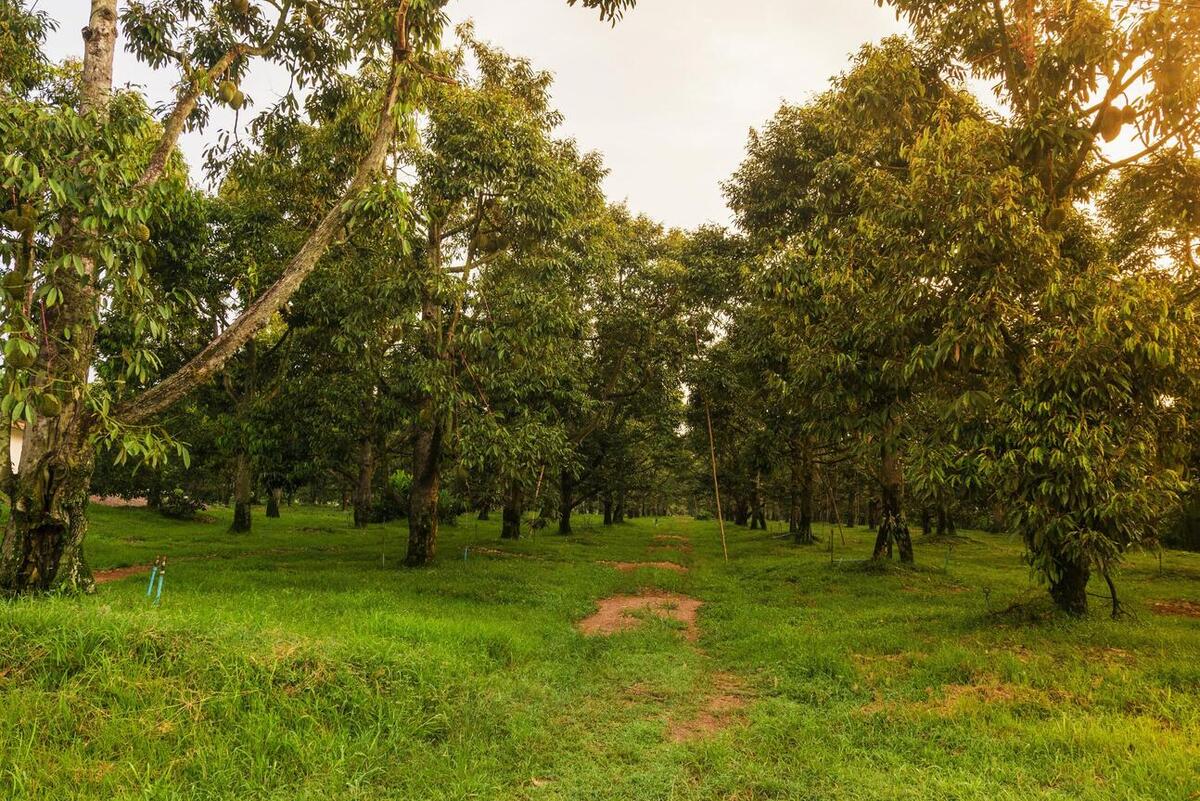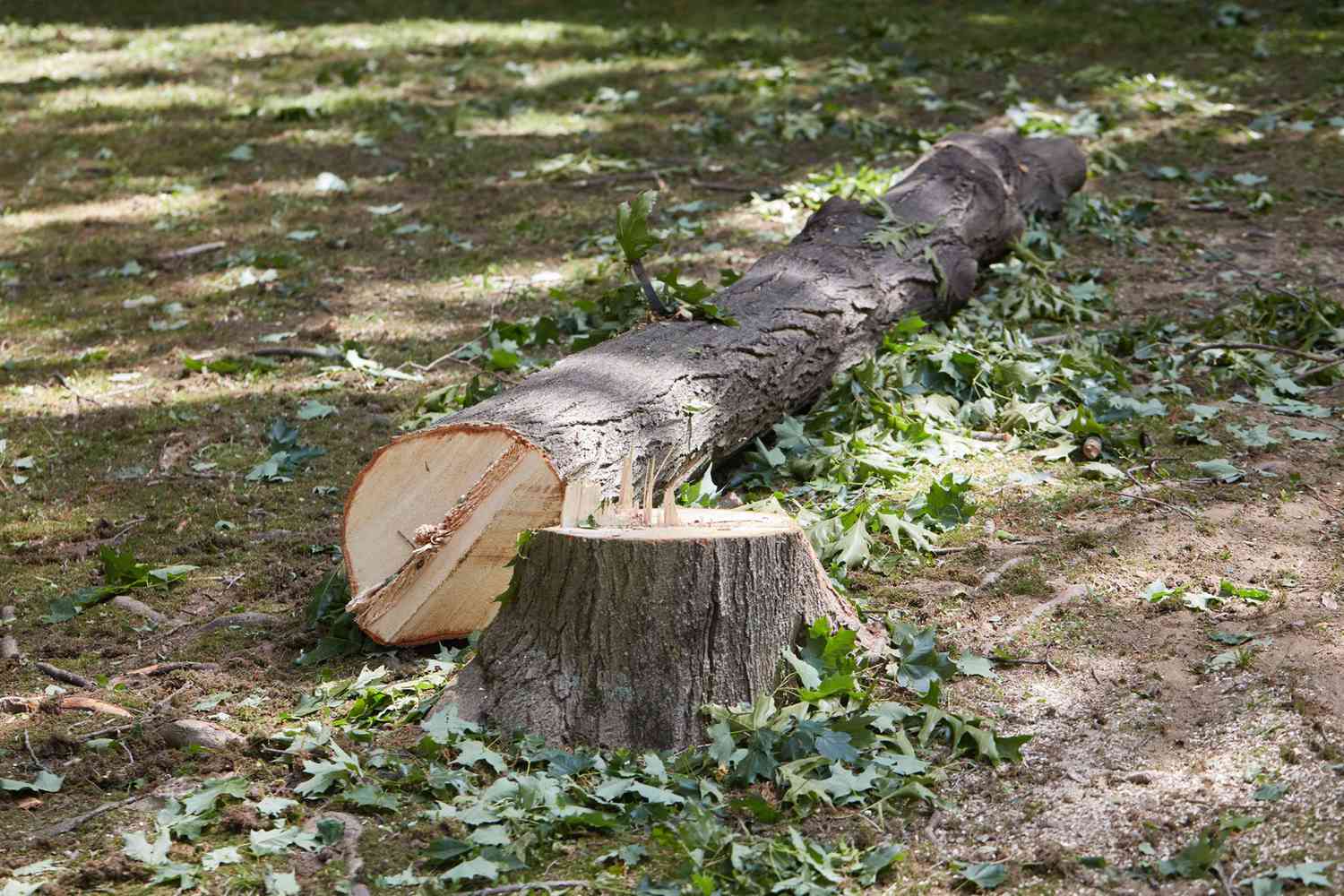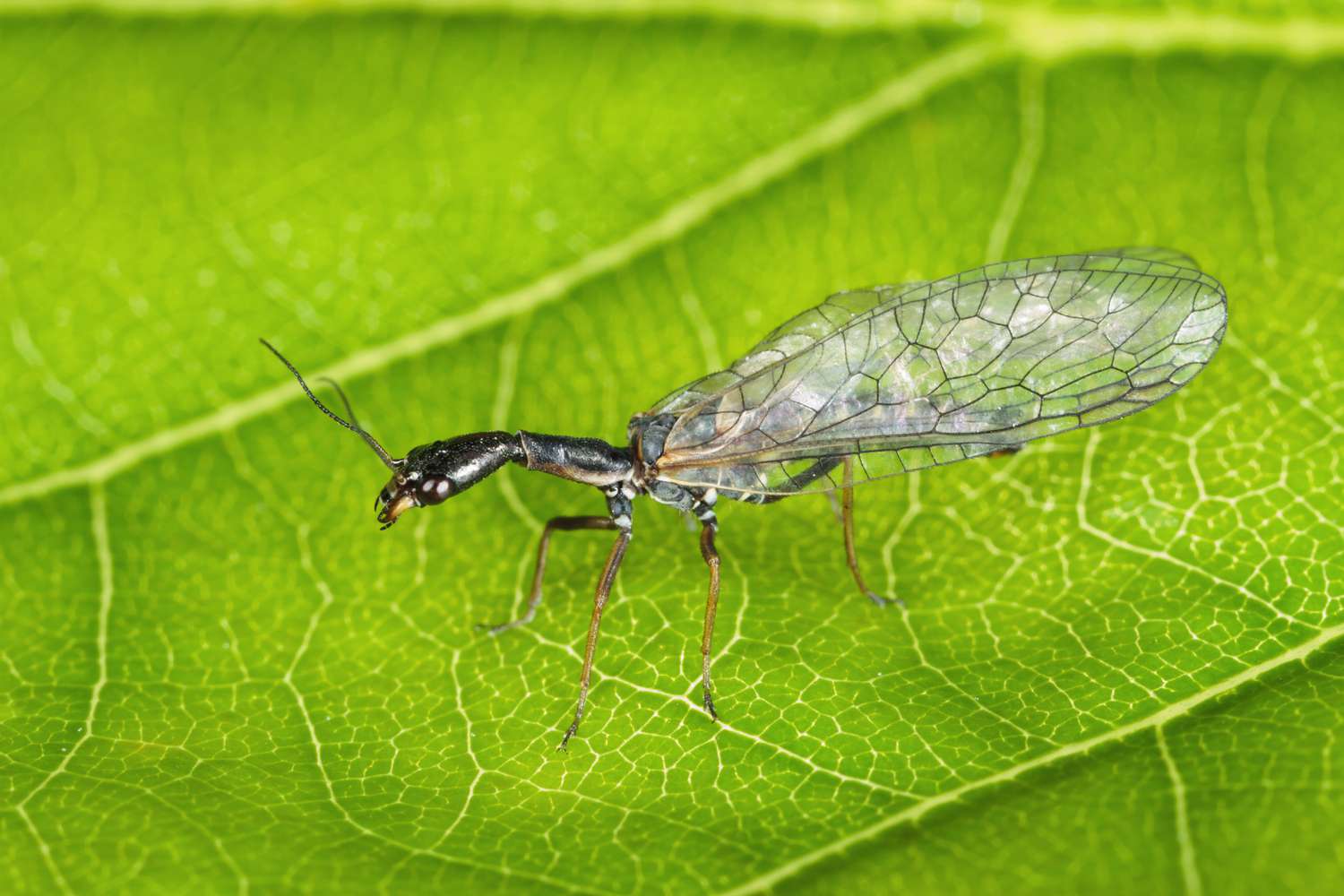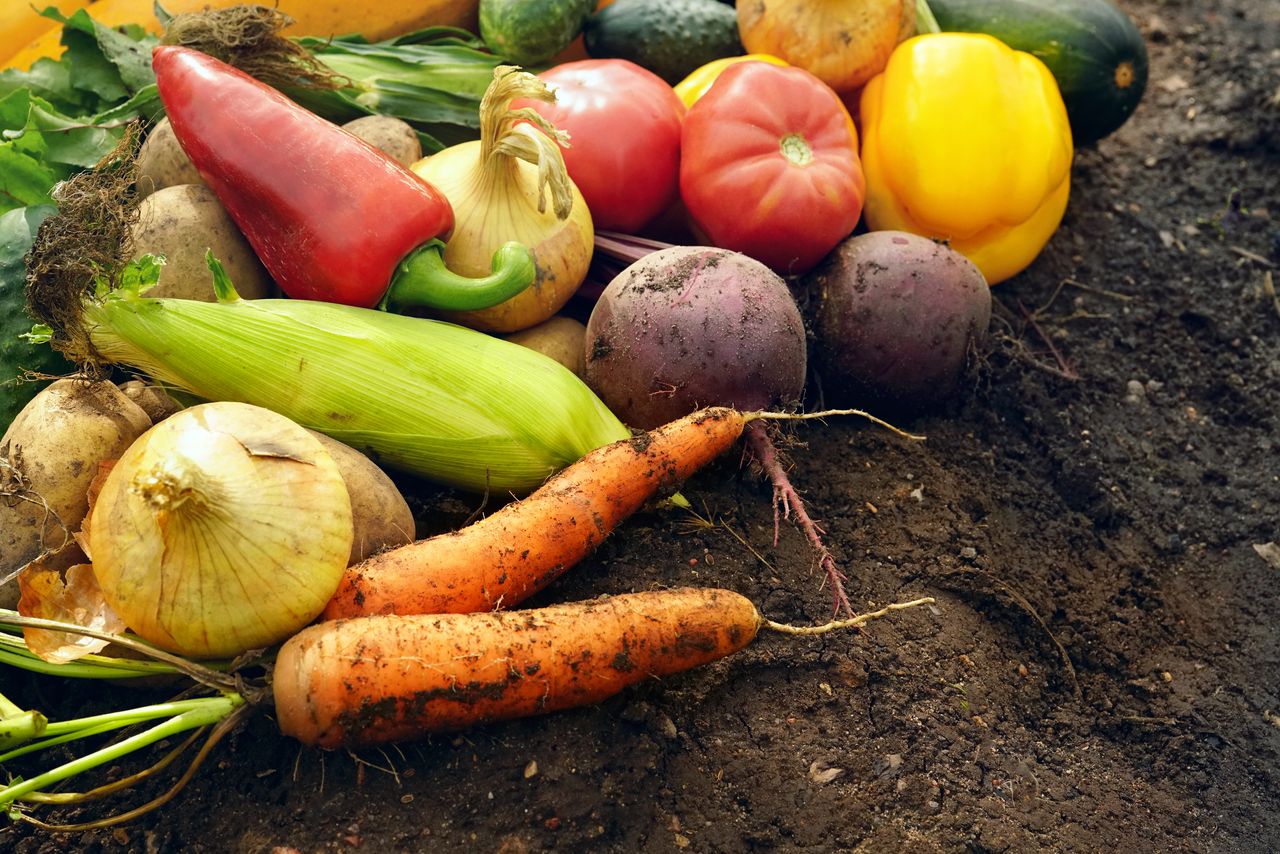Home>Gardening News and Trends>Latest News>How Many Trees Are In The U.S.
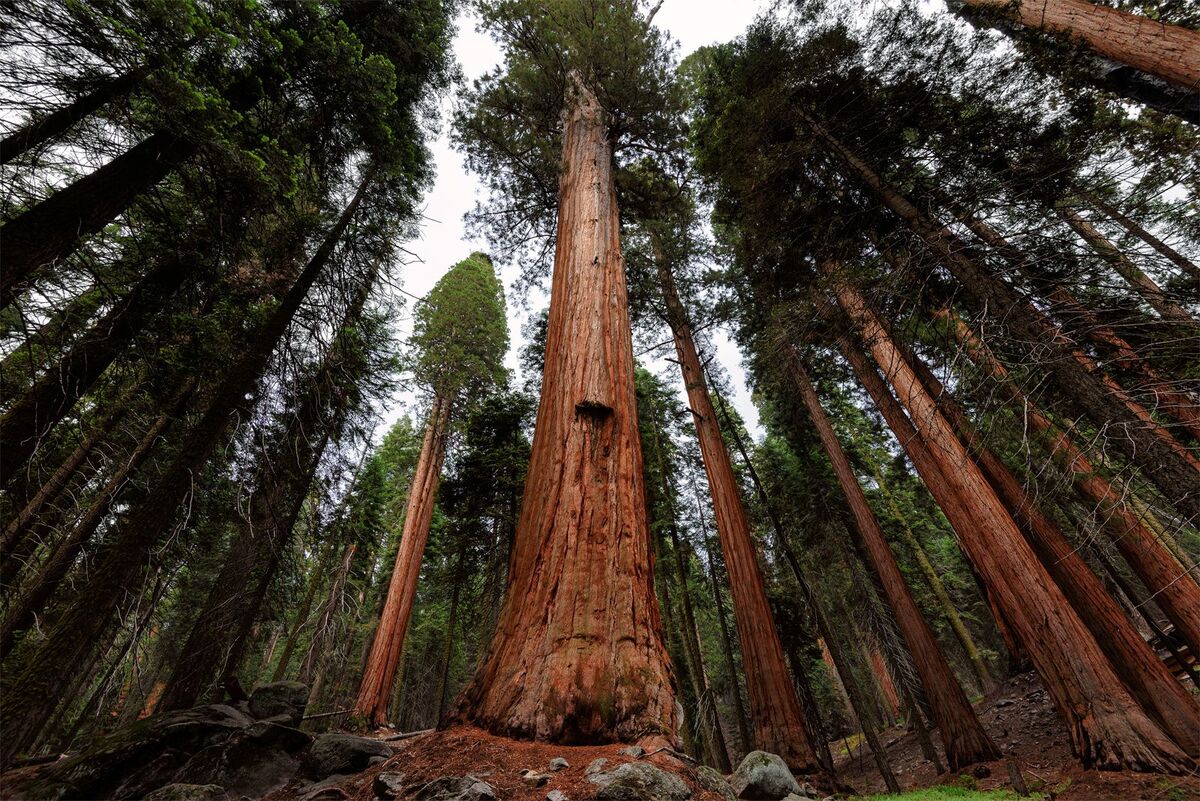

Latest News
How Many Trees Are In The U.S.
Modified: February 8, 2024
Discover the latest news on how many trees are in the US. Stay informed with the most recent updates and statistics surrounding the country's tree population.
(Many of the links in this article redirect to a specific reviewed product. Your purchase of these products through affiliate links helps to generate commission for Chicagolandgardening.com, at no extra cost. Learn more)
Table of Contents
Introduction
Welcome to the United States, a country known for its diverse landscapes and abundant natural resources. One of the most valuable resources that the US possesses is its vast forest cover. Forests not only provide habitat for countless wildlife species, but they also play a crucial role in mitigating climate change by absorbing carbon dioxide and releasing oxygen into the atmosphere. As concern for the environment continues to grow, understanding the extent and health of our forests becomes increasingly important.
The United States is home to a wide range of forest types, including temperate rainforests in the Pacific Northwest, hardwood forests in the Eastern regions, and pine forests in the South. It is estimated that approximately one-third of the country’s land area is covered by forests, making it one of the most forested nations in the world.
One question that often arises when discussing the US forest cover is: how many trees are there in the country? While it may seem like a straightforward question, determining the exact number of trees is a complex task. Trees can vary in size and density, and they are spread across vast areas, making it challenging to obtain an accurate count.
Furthermore, trees are dynamic organisms. They can grow, die, and be impacted by various factors such as natural disasters, pests, and human activities. This constant flux makes tracking the tree population a continuous and ever-evolving process.
Despite the challenges, scientists and researchers utilize various methods and technologies to estimate the number of trees in the United States. Their findings provide valuable insights into the overall health of forests and help inform conservation and management efforts.
In this article, we will delve into the methods used for tree counting in the US, explore the data provided by the USDA Forest Service, examine regional variations in tree density, discuss the impacts of deforestation and reforestation, and highlight the challenges faced in accurately counting trees. So, let’s embark on this journey to discover the fascinating world of trees in the United States.
Forest Cover in the United States
The United States is blessed with a diverse range of forests, spanning across different regions and ecosystems. These forests contribute significantly to the country’s natural heritage and ecological balance.
According to data from the USDA Forest Service, approximately 751 million acres of land in the United States are classified as forested. This accounts for about 33% of the country’s total land area. These forests can be found in various forms, including national parks, state forests, private lands, and protected wilderness areas.
The forest cover in the United States is not evenly distributed among the states. The Pacific Northwest, including states like Oregon and Washington, is known for its expansive temperate rainforests that receive abundant rainfall and support lush vegetation. The Southeast region, including states like Georgia and Florida, is characterized by extensive pine forests, while the Northeast is home to vast stretches of deciduous hardwood forests.
The forest cover in the United States has been affected by human activities and natural disturbances over the centuries. Historically, large-scale deforestation occurred as settlers cleared land for agriculture, timber extraction, and urban development. However, efforts to conserve and restore forests have also been significant, contributing to the vegetation growth in several areas.
Forest cover plays a vital role in maintaining the stability of ecosystems. Forests provide habitat for a diverse array of species, including mammals, birds, insects, and plants. Moreover, forests serve as a natural carbon sink, absorbing carbon dioxide from the atmosphere through the process of photosynthesis and storing it in the biomass of trees and soil. This helps in reducing greenhouse gases and combating climate change.
In recent years, there has been a growing focus on sustainable forest management practices to ensure the long-term health and productivity of forests in the United States. This includes activities such as timber harvesting, wildlife conservation, and monitoring the overall health and biodiversity of forest ecosystems.
The forest cover in the United States is a valuable resource that provides numerous benefits to both the environment and society as a whole. By understanding the extent and characteristics of this forested landscape, we can make informed decisions and take appropriate actions to preserve and protect these natural treasures for future generations.
Estimating the Number of Trees
Determining the exact number of trees in the United States is a daunting task due to the vast size of the country and the sheer number of trees spread across different ecosystems. However, scientists and researchers employ various methods and technologies to estimate the tree population.
One method used is statistical sampling. Researchers select specific areas or plots within forests and count the number of trees within those plots. By extrapolating these counts to the larger forested areas, they can estimate the total number of trees. This method allows for a representative sample to be taken, providing a statistically valid estimate of the overall tree population.
Technological advancements have also revolutionized tree counting. Remote sensing techniques, such as LiDAR (Light Detection and Ranging), use laser pulses emitted from aircraft or satellites to collect data on the height, shape, and density of trees. These data are then analyzed to estimate the number of trees in a given area. Remote sensing provides a more comprehensive and accurate picture of tree distribution, especially in large and inaccessible regions.
In recent years, machine learning algorithms have been employed to improve tree counting accuracy. These algorithms learn from large datasets to detect and classify tree structures from remote sensing imagery. By combining these automated methods with ground-based surveys, researchers can obtain more precise estimates of tree numbers across different ecosystems and regions.
The USDA Forest Service plays a crucial role in gathering and analyzing data related to forest cover and tree populations in the United States. They conduct extensive surveys, such as the Forest Inventory and Analysis (FIA) program, which provides information on forest structure, composition, and health. These surveys involve field measurements, aerial imagery analysis, and ground-truthing to validate data accuracy.
It is important to note that tree counts are not static. Trees are dynamic organisms, subject to growth, mortality, and regeneration. As such, tree population estimates can vary over time due to natural disturbances like wildfires, insect outbreaks, and diseases, as well as human-induced factors like deforestation and reforestation.
Despite the advancements in technology and data collection, estimating the number of trees still presents challenges. Factors such as non-uniform distribution of trees, variability in tree sizes, and limited access to certain areas make it difficult to achieve precise counts. However, continuous research and monitoring efforts help improve the accuracy of these estimates over time.
Understanding the number of trees is essential for assessing forest health, tracking changes in ecosystems, and guiding conservation and management strategies. By employing innovative methods and leveraging technological advancements, scientists and researchers can continue to refine their estimates and gain a deeper understanding of the vital role that trees play in the United States’ diverse landscapes.
Methods Used for Tree Counting
Counting the number of trees in the United States involves the use of various methods and techniques. These methods range from traditional field surveys to advanced remote sensing technologies.
One common method used for tree counting is systematic sampling. This involves dividing a forested area into smaller plots of equal size and randomly selecting a sample of these plots to conduct tree inventories. Within each plot, researchers measure tree attributes such as diameter at breast height (DBH), species identification, and height. Extrapolating the data from the sampled plots to the entire forest allows for an estimation of the total number of trees.
Alongside systematic sampling, aerial surveys are also employed. In these surveys, aircraft equipped with digital sensors capture high-resolution imagery of the forest. This imagery is then analyzed by experts who manually identify and count trees. Aerial surveys are particularly useful for large-scale assessments and in areas that are difficult to access on the ground.
Advances in remote sensing technology have revolutionized tree counting. LiDAR (Light Detection and Ranging) is one such technology that uses laser pulses to generate detailed 3D maps of forest structure. By measuring the time it takes for light to bounce back to the sensor, LiDAR can accurately determine the height and density of trees. This information can then be used to estimate tree numbers and generate precise inventories of forested areas.
In recent years, machine learning algorithms have been integrated into tree counting methods. These algorithms are trained using large datasets of remote sensing imagery and ground-based measurements. They learn to identify and classify tree structures, enabling automated and efficient tree counting over vast areas. Machine learning algorithms can detect subtle differences in tree characteristics and adapt to different forest types, improving the accuracy and speed of tree counting efforts.
Ground-based methods, such as the use of telescopic poles and clinometers, also contribute to tree counting. These tools allow researchers to measure tree height by observing the angle from the top of the tree to the observer, combined with the distance between the observer and the tree. These measurements, along with other attributes such as species and DBH, help in estimating tree populations.
Combining multiple methods and datasets is often necessary to obtain comprehensive and precise tree counts. Integrating ground-based surveys, aerial imagery, LiDAR data, and machine learning algorithms can provide a more holistic understanding of tree populations.
While these methods have significantly advanced our ability to estimate tree numbers, challenges still exist. Variability in tree species, size, and shape, as well as the presence of understory vegetation or canopy cover, can make accurate counts difficult. Additionally, factors like cloud cover and sensor limitations in remote sensing can introduce uncertainties into the data.
Nonetheless, ongoing research, technological innovations, and advancements in data analysis techniques continue to improve the methods used for tree counting. By advancing our understanding of tree populations, we can make informed decisions and implement effective strategies for the conservation and sustainable management of forests in the United States.
USDA Forest Service Reports
The United States Department of Agriculture (USDA) Forest Service plays a crucial role in monitoring and reporting on the status and health of forests across the country. Through their comprehensive surveys and assessments, the Forest Service provides valuable data and insights into the state of forest cover and tree populations in the United States.
One of the primary programs conducted by the Forest Service is the Forest Inventory and Analysis (FIA). This program collects data on forest attributes such as tree species composition, tree size, volume, and growth rates. The FIA program utilizes field measurements and sampling techniques to gather data across a representative sample of forested areas in the United States, providing estimates at regional and national scales.
The FIA program produces regular reports that summarize the data collected. These reports contain information on forest land area, tree density, forest biomass, carbon storage, and other vital indicators of forest health. By analyzing these reports, researchers, policymakers, and land managers can gain insights into the state of forests and identify trends or changes that may require attention.
The Forest Service also collaborates with other agencies, academic institutions, and non-profit organizations to gather additional data and conduct specialized studies. This collaborative effort helps in enhancing the scope and accuracy of the information provided in their reports.
One of the notable reports published by the Forest Service is the “Status and Trends of the Nation’s Forests” report. This report provides an in-depth analysis of the forested lands in the United States, including information on forest types, ownership, disturbances, and ecological conditions. It offers a comprehensive overview of the current state of forests and allows for comparisons across different regions and timeframes.
In addition to the national-level reports, the Forest Service also produces reports specific to individual states and regions. These reports offer localized data and insights, helping stakeholders better understand the unique characteristics and challenges of specific forested areas.
The reports and data provided by the USDA Forest Service serve as a valuable resource for decision-making, policymaking, and forest management practices. They contribute to the development of science-based strategies for sustainable forest management, conservation efforts, and the protection of biodiversity.
Continued monitoring and reporting efforts by the Forest Service are essential for tracking changes in forest cover, assessing the impacts of climate change and human activities, and identifying potential issues that may affect the health and sustainability of forests in the United States.
Regional Variations in Tree Density
The tree density in the United States varies significantly across different regions due to a multitude of factors, including climate, soil conditions, and historical land use practices. Understanding these regional variations in tree density provides valuable insights into the distribution and health of forest ecosystems across the country.
The Pacific Northwest region, encompassing areas such as Oregon and Washington, is known for its dense forests. This region receives abundant rainfall, facilitating the growth of towering trees, such as Douglas firs and Western red cedars. The combination of temperate climate and favorable conditions creates an ideal habitat for a variety of tree species, resulting in high tree density.
In contrast, the southwestern region of the United States, characterized by states such as Arizona and New Mexico, experiences arid and semi-arid conditions. The limited availability of water and extreme temperature fluctuations restrict tree growth, resulting in lower tree density compared to other regions. Here, trees like pinyon pines and junipers have adapted to survive in the harsh desert environments.
The Southeast region, including states like Georgia and Florida, is home to vast stretches of pine forests. These forests are characterized by dense stands of various pine species, such as loblolly pines and longleaf pines. The warm climate and favorable soil conditions in this region contribute to the high tree density observed.
The Northeast region of the United States, which includes states like New York and Vermont, is renowned for its hardwood forests. These forests contain a diverse array of deciduous tree species, including maples, oaks, and beeches. The presence of numerous tree species and the favorable growing conditions lead to relatively high tree density in this region.
Regional variations in tree density are also influenced by historical land use practices. For instance, areas that were heavily logged in the past may have lower tree density due to a lack of mature trees and the time needed for regeneration. On the other hand, areas with a history of conservation and reforestation efforts may exhibit higher tree density as a result of active management practices and restoration initiatives.
Understanding regional variations in tree density is crucial for effective forest management and conservation strategies. It helps identify areas that may require specific attention, such as regions with declining tree density due to human-induced factors or disturbed ecosystems that might benefit from restoration efforts.
Furthermore, regional variations in tree density influence biodiversity, carbon sequestration, and overall ecosystem health. High-density forests provide ample habitat for diverse wildlife species, while also capturing a significant amount of carbon dioxide from the atmosphere, assisting in mitigating climate change.
By acknowledging and studying these regional variations, researchers, policymakers, and land managers can develop targeted initiatives to address specific challenges and ensure the long-term sustainability of forests across different regions in the United States.
Impacts of Deforestation and Reforestation
Deforestation and reforestation are two processes that have significant impacts on forest ecosystems and the broader environment. Understanding these impacts is essential for promoting sustainable land use practices and mitigating the effects of climate change.
Deforestation, the clearing of forests for various purposes such as agriculture, logging, and urbanization, has detrimental effects on both local and global scales. One of the most immediate impacts is the loss of habitat for countless plant and animal species. The destruction of forest ecosystems disrupts intricate food chains and can lead to the decline or extinction of species.
Deforestation also contributes to climate change. Trees act as natural carbon sinks by absorbing carbon dioxide from the atmosphere through photosynthesis. When forests are cleared, this carbon is released back into the atmosphere, increasing greenhouse gas concentrations and accelerating global warming.
In addition, deforestation can result in soil erosion and loss of fertile land. The roots of trees help bind the soil, preventing erosion by wind and water. Without vegetation, the soil becomes more susceptible to erosion, leading to sedimentation of rivers, degradation of water quality, and reduced agricultural productivity.
Reforestation, on the other hand, involves the intentional planting of trees or the natural regeneration of forests in previously deforested areas. Reforestation initiatives have several positive environmental impacts.
Firstly, reforestation helps restore habitat for native plant and animal species, promoting biodiversity and ecosystem health. Trees provide shelter, food sources, and nesting sites for a wide range of organisms, contributing to the reestablishment of diverse and thriving ecosystems.
Reforestation also plays a crucial role in mitigating climate change. By planting trees, carbon dioxide is absorbed from the atmosphere and stored in their biomass. This helps reduce greenhouse gas emissions, acting as a natural solution to combat global warming. Reforested areas also contribute to the restoration of water cycles, as trees help regulate water flow, improve water quality, and prevent soil erosion.
Furthermore, reforestation projects can have socio-economic benefits. They create employment opportunities, particularly in rural and economically underdeveloped areas. Reforestation initiatives can also support sustainable timber production, providing a renewable resource while preserving forest ecosystems.
It is important to note that the success of reforestation efforts depends on using appropriate tree species for the specific ecological conditions of the area. Careful planning, monitoring, and long-term management are necessary to ensure the ecological and economic viability of reforested areas.
The impacts of deforestation and reforestation extend beyond individual forests and regions. They have implications for climate patterns, water cycles, biodiversity, and human livelihoods. Recognizing the importance of forest ecosystems and implementing sustainable land use practices is crucial for ensuring a healthy and sustainable environment for present and future generations.
Challenges in Tree Counting
Counting trees may seem like a straightforward task, but there are several challenges associated with accurately estimating the number of trees in the United States. These challenges arise from various factors, including the size and diversity of the country, the complex nature of forest ecosystems, and the limitations of data collection methods.
One of the primary challenges in tree counting is the vastness of the United States. The country spans a large geographic area, encompassing diverse ecosystems, landscapes, and vegetation types. Covering such a wide range of habitats and monitoring the entire country is a massive undertaking that requires significant resources and time.
The diversity of tree species adds another layer of complexity to tree counting efforts. Different tree species have varying growth patterns, sizes, and densities, making it challenging to develop universal counting methods that apply to all forest types. Adjusting counting methods and survey techniques to accommodate these variations is essential for obtaining accurate tree population estimates.
Furthermore, trees are not evenly distributed across the landscape. Some areas may have high tree density, while others are relatively sparse. This non-uniform distribution poses challenges in accurately sampling and extrapolating data to estimate the overall tree population. Ensuring representative sampling across different forest types and regions is crucial to obtain accurate tree count estimates.
The dynamic nature of forests presents another challenge in tree counting. Trees can grow, die, and regenerate over time. Natural disturbances, such as wildfires, storms, insect outbreaks, and diseases, can also impact tree populations. These factors contribute to the constant flux in tree numbers, meaning that tree counts are not static but change over time.
Data collection methods also have inherent limitations. Field surveys can be time-consuming and resource-intensive, especially when trying to cover large areas. Aerial and remote sensing techniques provide valuable data, but they have limitations in precision and may struggle with distinguishing crowded or smaller trees. Machine learning algorithms, while promising, still require validation and fine-tuning to ensure accuracy across diverse forest ecosystems.
Access to certain areas can also pose challenges in tree counting. Remote or inaccessible regions, such as dense forests, mountainous terrain, or private lands, may present difficulties in obtaining accurate data. Overcoming these access limitations requires innovative approaches and collaboration with landowners, agencies, and local communities.
Despite these challenges, ongoing advancements in technology, remote sensing, and data analysis techniques are helping to improve tree counting accuracy. Combining multiple methods and datasets, integrating ground-based surveys with aerial and remote sensing data, and employing machine learning algorithms offer potential solutions to overcome some of the challenges associated with tree counting.
Improved collaboration, data sharing, and standardized protocols among researchers and institutions are also crucial for accurate and comprehensive tree counting. By addressing these challenges, we can better understand the state of forest ecosystems and make informed decisions to preserve, manage, and sustainably utilize our valuable tree resources.
Conclusion
The number of trees in the United States is a topic of great importance, as forests play a vital role in maintaining biodiversity, mitigating climate change, and providing numerous ecological, economic, and societal benefits. While accurately estimating the exact number of trees in the country is challenging, scientists and researchers employ various methods and technologies to provide valuable insights into tree populations and forest health.
The United States is home to diverse forest ecosystems, with variations in tree density across different regions. From the dense forests of the Pacific Northwest to the sparse vegetation of arid southwestern areas, understanding these regional differences helps inform conservation efforts and management strategies.
The USDA Forest Service plays a crucial role in gathering and analyzing data on forest cover and tree populations through programs like the Forest Inventory and Analysis (FIA). Their reports provide valuable information on forest health, carbon storage, and biodiversity, guiding decision-making processes and promoting sustainable forest management practices.
Tree counting methods have evolved with advancements in technology, including remote sensing, machine learning, and ground-based surveys. These methods help estimate tree numbers and provide valuable insights into forest dynamics and ecosystem function.
However, challenges persist in accurately counting trees. Factors such as varying tree species, the vastness of the country, non-uniform tree distribution, and the dynamic nature of forests pose difficulties in obtaining precise tree population estimates. Ongoing research, technological advancements, and collaborations are essential in overcoming these challenges and refining the accuracy of tree counting efforts.
Deforestation and reforestation have profound impacts on forest ecosystems and the environment. While deforestation contributes to habitat loss, reduced biodiversity, and increased greenhouse gas emissions, reforestation initiatives restore habitats, mitigate climate change, and provide socio-economic benefits.
Understanding the challenges and implications of tree counting, deforestation, and reforestation allows for informed decision-making to promote sustainable land use practices, protect forest ecosystems, and mitigate the effects of climate change.
Efforts to accurately count trees in the United States are ongoing. By continuously improving our methods and understanding of tree populations, we can better monitor forest health, identify areas that require attention, and develop strategies to preserve and manage forests for the benefit of present and future generations.
